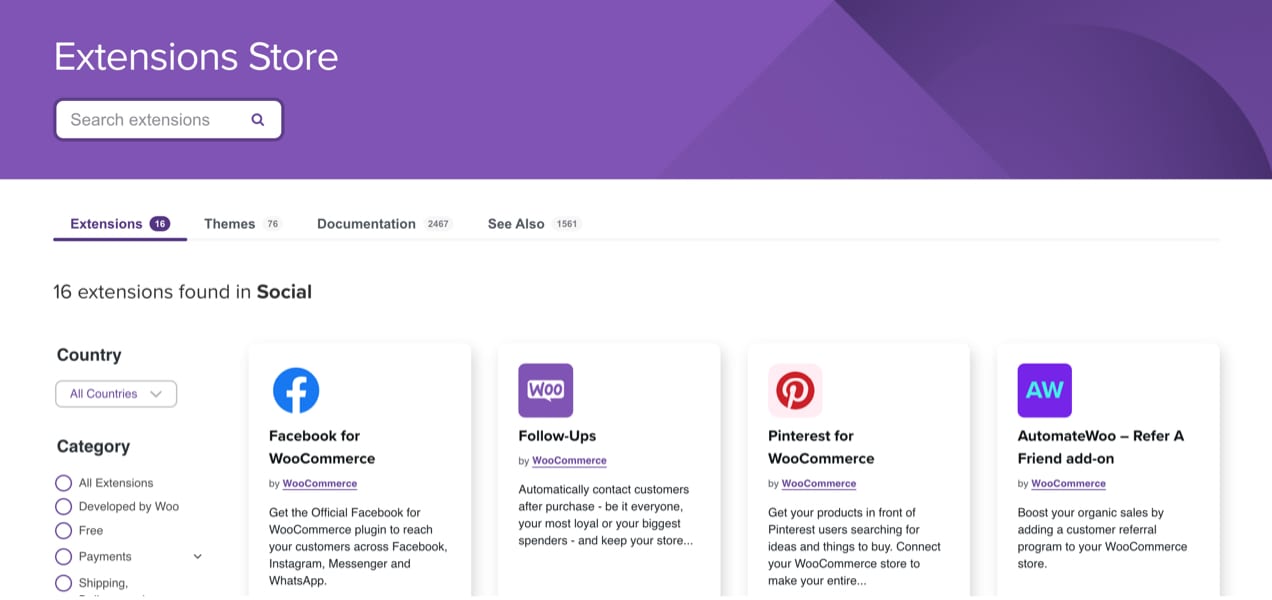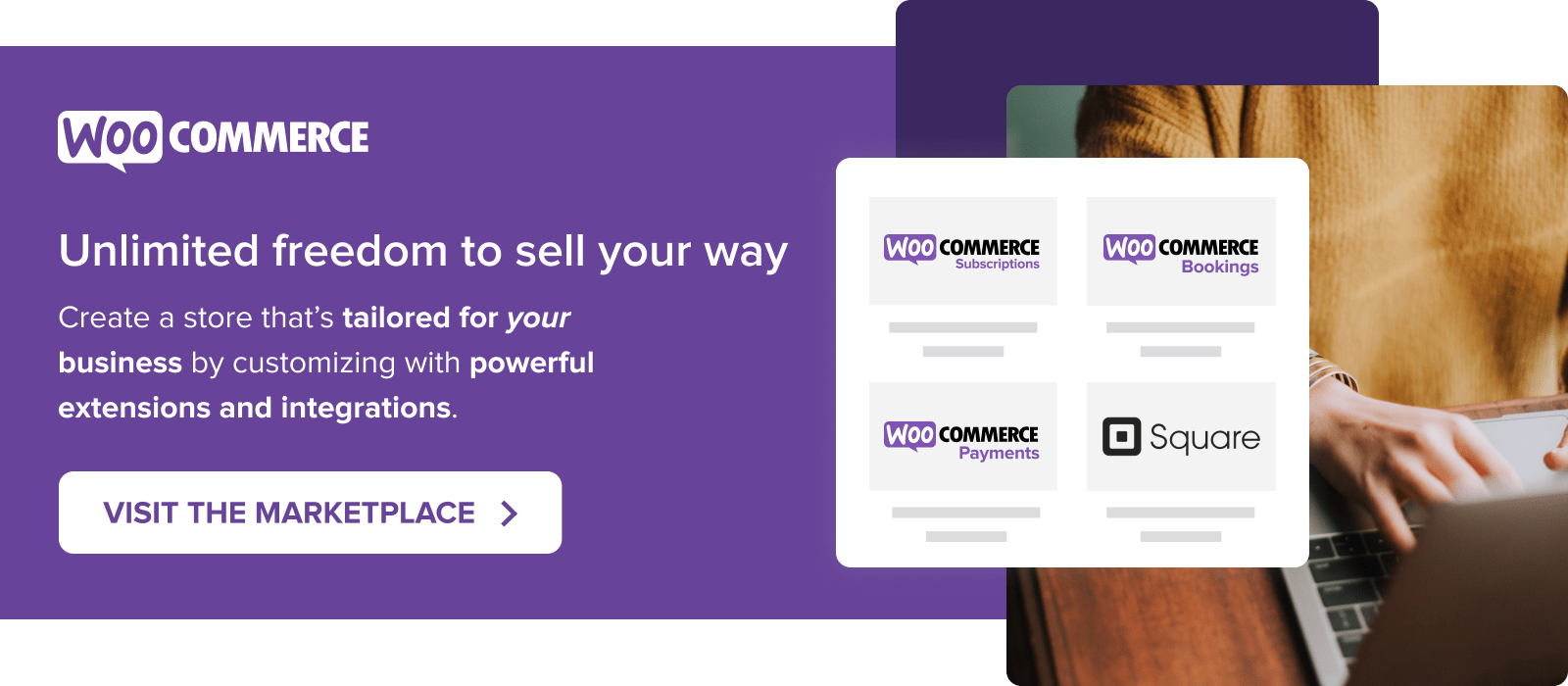[ad_1]
Social commerce is the fastest-growing trend in ecommerce, boasting a compound annual growth rate (CAGR) of around 30%. It’s no mystery as to why, either. Across the globe, people spend an average of two and a half hours every day on social media. They interact with their friends, get their news and entertainment, and shop all in one place.
Social commerce accounted for nearly $1 trillion in sales during 2022. With the global ecommerce industry estimated at around $3 trillion, that means social commerce might make up as much as a third of all ecommerce sales. So if your business hasn’t started developing a social commerce strategy, now’s the time to take action!
What is social commerce?
Social commerce gives people the ability to make purchases directly through social media apps instead of clicking on ads that take them off-platform. For instance, if you’re scrolling through Instagram, you may see a shoppable post featuring jewelry that catches your eye. You can then click on the product you’re interested in, add it to your cart, and check out – all without leaving Instagram.
As shoppers become less inclined to leave their favorite apps to shop elsewhere, it’s becoming increasingly imperative for businesses to focus more energy on social media.
Facebook, Instagram, TikTok, Pinterest, Twitch, YouTube, and WhatsApp are just some of the major social media platforms that offer the ability to purchase products directly. From discovering a product via a post, livestream, ad, or in-app marketplace to completing checkout, the entire purchasing process occurs within the app.
What’s the difference between social commerce and social advertising?
Social media advertising focuses primarily on getting people to click through to an external website or landing page from ads. In contrast, social commerce involves purchasing items directly within social networks without ever leaving. Social commerce often offers things like one-click payments, product pages that are accessible from profiles or posts, and chatbot features that allow customers to place orders quickly.
There’s definitely an intersection between social advertising and social commerce, though. While you can engage in advertising without having a social commerce store, it’s difficult to use social commerce without some form of social advertising.
The same advertising methods used to drive traffic to your site from social media can now simply direct to your social commerce store. Shoppable posts on Instagram, live streamed product promotions on Twitch (with shoppable posts also coming soon to TikTok), shoppable videos on Instagram and TikTok, and subscription videos on YouTube are all still important parts of social advertising. But now, you have more options for where to send users to check out.
Before you dive into the advertising portion of your strategy, you’ll first want to figure out how social commerce can benefit your business and where, how, and what you’re going to sell.
What are the key benefits of social commerce?
Social commerce can be an effective way to capitalize on the following you’ve grown on social media. It allows you to:
- Foster trust and loyalty with consumers by providing a more convenient way to shop. Showing that you understand their needs and want to meet them where they are can go a long way!
- Improve conversion rates by creating a frictionless shopping experience. Instead of navigating back and forth between sites and accounts, customers can browse and purchase in the same place.
- Learn more about your customers’ habits and buying behaviors through each platforms’ analytics. Then, you can use the data you collect to improve marketing strategies, targeting, and ad creative.
- Build brand recognition and reach new audiences who may not have found you on another platform.
- Quickly and easily interact with shoppers to get feedback and offer customer support.
What social commerce platforms should I use?
When choosing a social commerce platform, it’s important to consider where your customers spend their time, along with which products you want to promote. It’s not as simple as setting up a store on all your favorite social media apps and then waiting to see what happens.
Determine which platforms your customers are using and make sure that the products you sell are allowed on that platform before you get started.
While there are a lot of similarities between platforms regarding what products aren’t allowed (no firearms, illegal substances, live animals, etc.) there are important differences that could drastically impact your sales.
For instance, Facebook and Instagram don’t allow sales of digital content, but TikTok and Twitch do. YouTube allows you to sell channel memberships in-platform as long as you’re using YouTube to host your videos. Otherwise, YouTube’s social commerce shopping feature doesn’t allow you to sell digital content, since it’s governed by the same terms as Google Shopping.
If you sell products that are often restricted on social commerce platforms, it may be more difficult for you to take advantage of the opportunity that selling on social media provides. If you sell digital downloads, tobacco accessories, alcohol or products related to alcohol, healthcare products, adult products, or services, you may not be able to use social commerce at all or could be restricted to one or two platforms.

However, if you’re selling apparel and fashion accessories, home goods, decor, beauty products, fitness gear, or tech gadgets, the social commerce world is a huge opportunity! Not only are these products allowed on every platform (as long as they comply with community guidelines), they’re the types of products that perform well on social media.
Want to learn more? Check out “Social Media for Ecommerce: Choosing the Right Platforms.”
What are the basics of creating a successful social commerce strategy?
Creating a successful social commerce strategy takes effort and planning. Make sure you spend time on the following areas to ensure you see the maximum possible return from your efforts:
1. Keep your branding consistent across all channels
Consistency is key when it comes to social commerce. Establishing a recognizable brand presence and ensuring that logos, colors, typography, messaging, tone, and content remain consistent across all social platforms is vital for success.
Create a brand identity guide that your creative team can reference as they craft copy for products and ads, stage photo and video shoots, and develop graphic layouts. This will help shoppers identify your brand and feel at home no matter where they’re browsing.
2. Create a plan that supports your goals
Before crafting content or investing in any creative assets, take the time to define a social media strategy that will support your specific goals. Think about the types of content you want to create, where you’ll publish it, and how you’ll promote it.
Developing an effective social commerce strategy requires a great deal of research into the social media platforms that best fit your brand and audience. Consider social media trends, user behaviors, and industry best practices to determine where you should focus your resources. Additionally, create a social media content calendar ahead of time to help plan promotions and campaigns.
3. Define your budget
When it comes to social commerce, thoughtful budgeting and goal-setting is essential. Make sure you allocate enough to cover all necessary expenses associated with creating your stores and advertising your products.
Additionally, clearly define your goals so that they’re measurable at the end of every campaign, in addition to any weekly, monthly, quarterly, or annual reports.
4. Engage with your customers and prospective buyers
Ads can generate brand visibility and revenue, but nothing impacts prospective buyers like human connection. Proactive, authentic engagement goes a long way towards winning trust. So comment on posts your brand is tagged in, respond to comments on your own posts and ads, share customers’ photos and videos, and answer direct messages in a timely fashion.

You can also directly reach out to potential customers and start building a relationship with them by commenting on posts that are relevant to your industry or products. Send sponsored direct messages to those who’ve visited your site in the past, and follow people on more than one platform to get their attention.
By actively engaging with social media users and those who’ve already expressed interest in what you offer, you can better stand out amongst the noise. They’ll recognize you the next time you show up in their feed. They’ll pause and see what you have to say. And they just might click over to try what you’re selling.
5. Invest in paid advertising
While paid advertising may not be necessary to have a successful social commerce store, many businesses find that it’s a must to meet their goals.
If you’re new to social advertising, you’ll probably want to start with some relatively simple ads. For example, you can take organic content that performed well in the past and use it again in the form of an ad. Or if you’ve had success with a particular print ad, direct mailer, or something else, you can adapt it for social media and see if it performs well there, too!
If your followers created content with your products or tagged you in posts, you may be able to use those in ads as well. Known as user-generated content, highlighting experiences from real-life followers is often more effective than a staged photoshoot. This strategy takes the power of reviews and testimonials and applies it to online advertising.
Types of advertising include:
- Livestream product promotions (Facebook, Instagram, Twitch, YouTube)
- Influencer marketing (all platforms)
- Video ads (all platforms)
- Product-based ads (Facebook, Instagram, TikTok, Pinterest)
- Marketplace sponsored ads (Facebook, Instagram)
- Boosted posts (Facebook, TikTok)
- Personalized collection ads (Pinterest)
- Static image ads (Facebook, Instagram, Pinterest, Twitter)
Learn more: How to turn social media followers into customers.
6. Create a strategy to boost conversions
Even with great products and interested followers, sales might not happen at the pace you’d like. To convert shoppers into customers, you need to spend time developing strategies to close the deal. Your goal is to ensure people have the information they need, trust your brand and products, and feel a sense of urgency to act. Here are some ways to help improve conversions on social commerce:
- Hold flash sales or provide updates on low stock volumes to create urgency and convert people who’ve been watching your store for a while, but haven’t decided to act.
- Release limited edition versions of products or product bundles and hold livestream sales events around special occasions. This pairs urgency and scarcity with the excitement of something that’s highly relevant.
- Create retargeting ads that feature reviews or testimonials to build trust.
- Promote answers to common questions so potential buyers have all of the information they need.
7. Stay on top of emerging trends
Social media platforms are launching new features and discontinuing others all the time. It’s important to stay on top of new developments so that you can adapt your strategies in a way that’s beneficial to your business.
Don’t be afraid of change! Being an early adopter of any new capabilities for social shopping can position you as a cutting-edge brand. And understanding upcoming changes that will alter the ecommerce landscape (like the iOS 15 privacy updates) will give you the time to modify your marketing approach.
Don’t forget to track competitor activity on social media so you know what kind of tactics they’re using. You may find strategies you want to emulate or avoid – both are important to learn from. By keeping on top of industry trends, successes, and failures, you can stay ahead of the curve.
8. Regularly revise your strategy based on performance
Social commerce is an evolving field, requiring continuous optimization and refinement. It’s important to review the performance of products and campaigns regularly, so that you can make adjustments that improve your results and reach your desired objectives.
When assessing campaign performance, consider factors such as audience engagement levels, social reach, conversion rates, cost per acquisition (CPA), and any other factors that are important to your business.
Analyze these metrics to spot any deficiencies in your strategy or areas where there may be potential for improvement. This will help you identify opportunities to refine your social commerce approach over time and ensure that it remains successful and up-to-date.
Connect your WooCommerce store to your social commerce stores
Last but not least, make sure you connect your social commerce channels to your WooCommerce store. Even when you’re selling directly through social media platforms, you’ll want to make sure your own store is linked.

There are three very important reasons to connect your store with your social media accounts:
- Inventory management. There are official extensions for TikTok, Pinterest, and Facebook in the WooCommerce Marketplace that sync your product and inventory and help you manage pixels to track performance.
- Customer convenience. Allow customers to use their social media accounts to sign in to your website using WooCommerce Social Login. Being able to engage with your brand on social media, then use that same account to log into your website and make a purchase makes it easier for customers. Plus, this can increase trust in your brand.
- Positive brand experience. Connecting your store and social commerce channels simplifies the shopping experience, builds trust, and encourages customers to engage with your brand. This can lead shoppers to make future purchases, share their experiences on social media, leave reviews, and add positive comments.
You can also use tools like Outfy to quickly design engaging videos, collages, GIFS, and other graphics that can maximize your social commerce effectiveness.
Social commerce can help you more closely integrate your brand with the daily activities of your most important leads and customers. It can be an easier, more trusted platform for shoppers and reduce friction, which can help boost sales. Plus, selling products directly on social platforms can help you unlock the full potential of social advertising and measurement tools.
Don’t miss this opportunity to continue to adapt your store!
[ad_2]
Source link






![What Best Practices Should I Follow When Recording a Video for an Automated Webinar? [JOIN WEBINAR]](https://wildfireconcepts.com/wp-content/uploads/2023/02/best-practices-automated-webinar.pngkeepProtocol-440x264.png)



